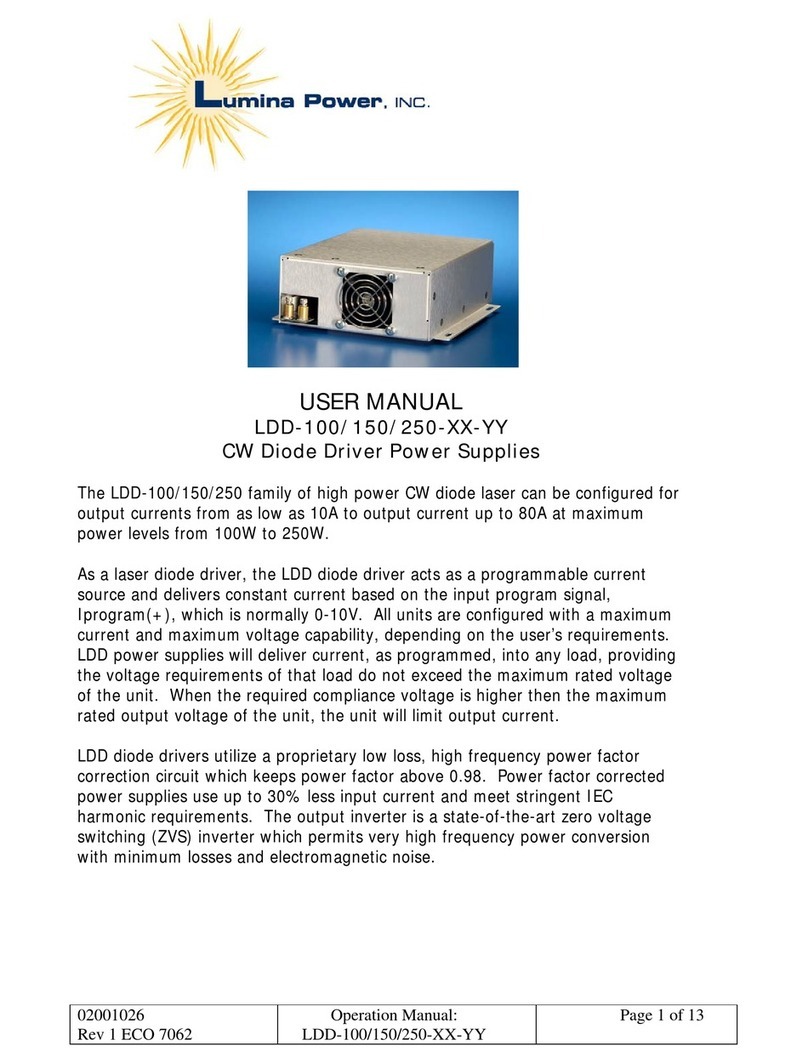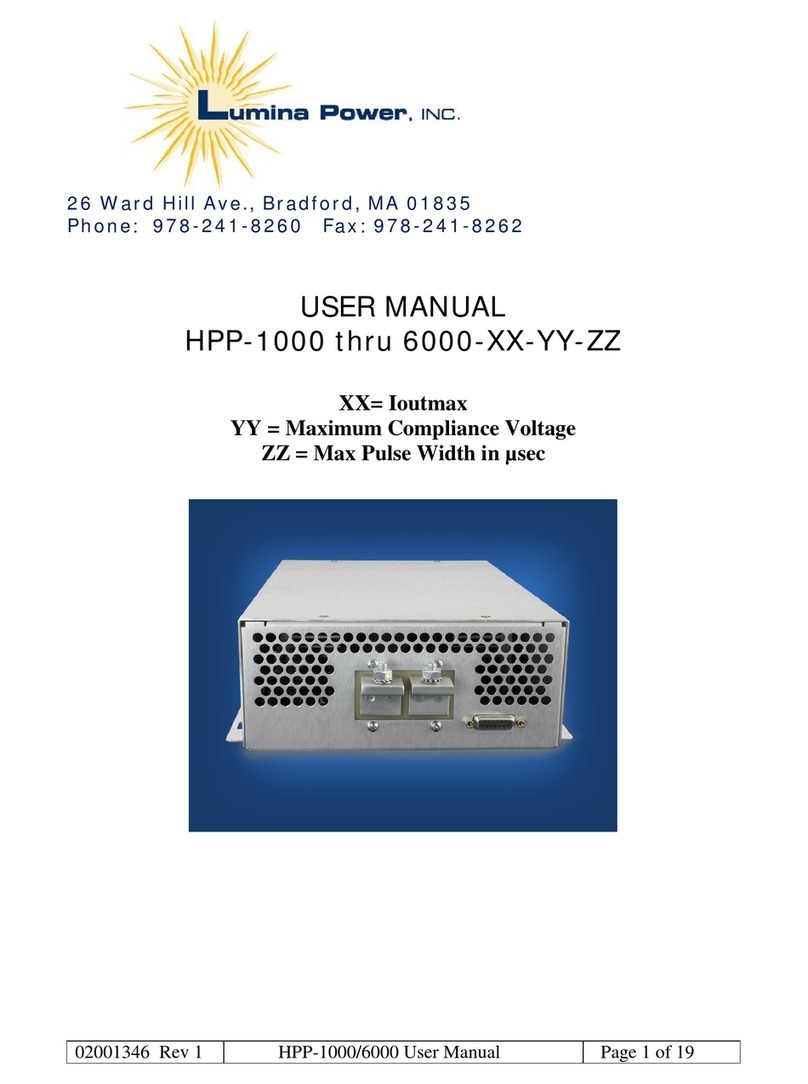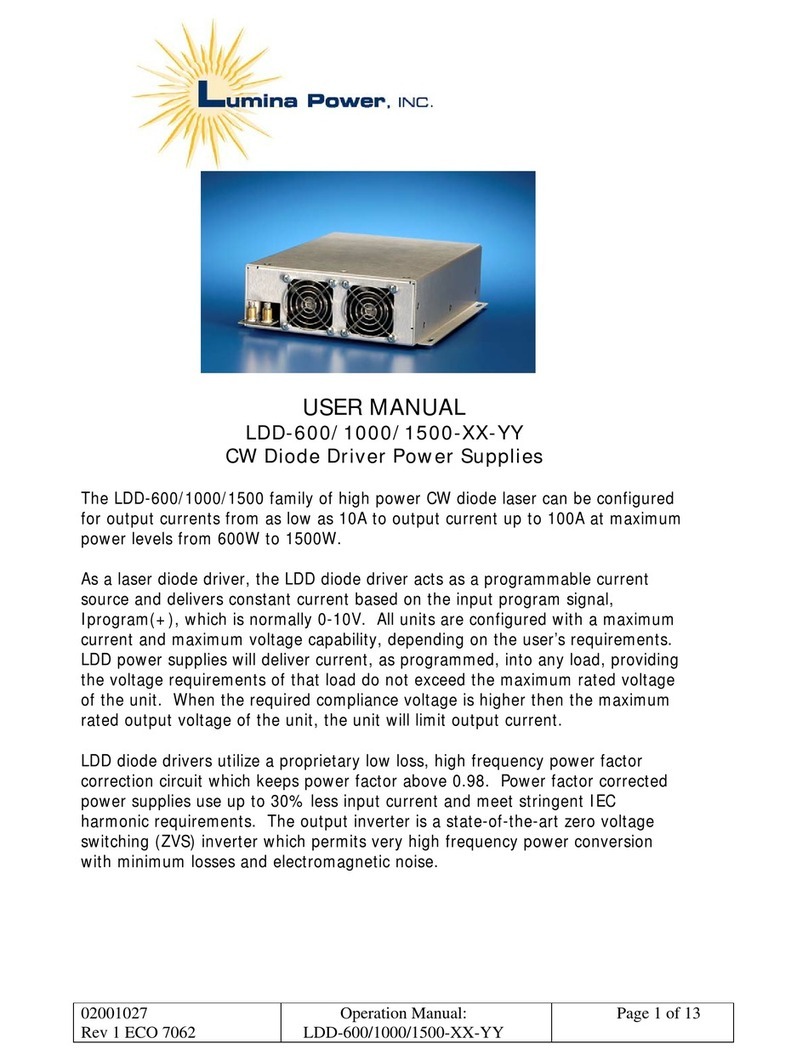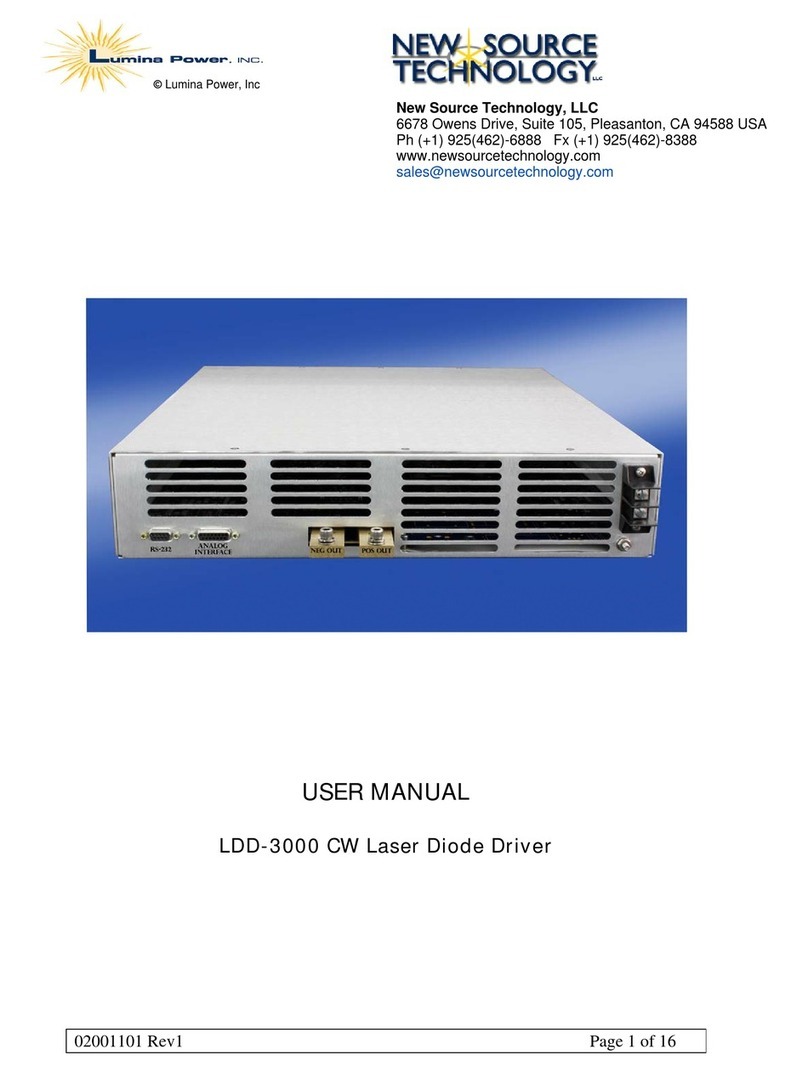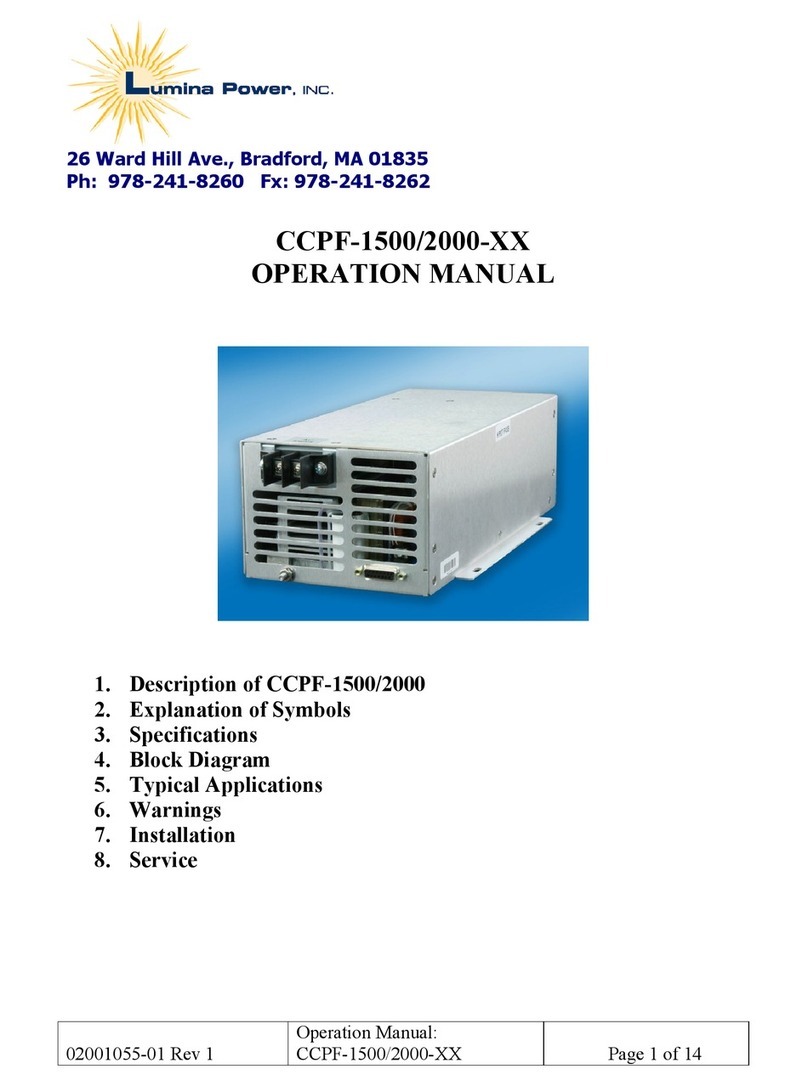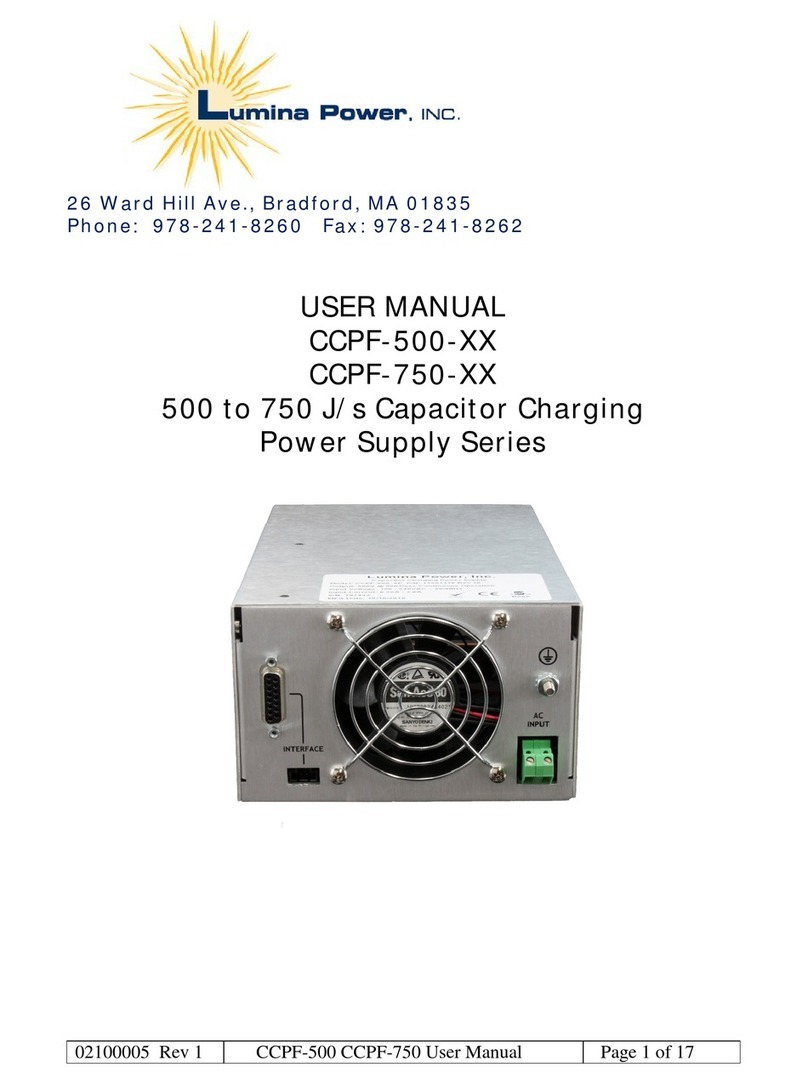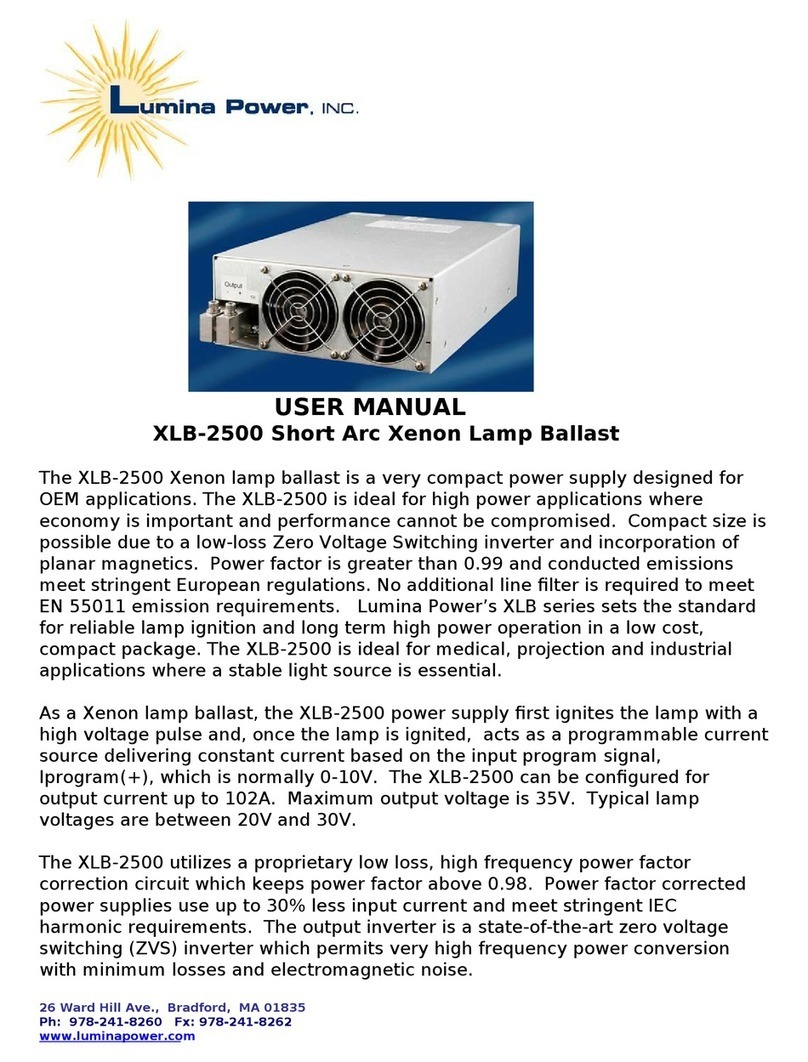
02001101 Rev1 Page 5 of 16
LDD-3000 Diode Driver Theory of Operation
(Refer to Figure 1)
The LDD-3000 has been designed specifically for the OEM high power CW laser diode systems. OEM
power supplies for the laser diode industry have the following requirements:
•Safe laser diode operation
•Broad range of control of output current
•Safe rise/fall times
•Auxiliary power supplies to simplify overall laser system design
•Power factor correction to conform with CE requirements
•Low conducted electromagnetic emissions
Referring to Figure 1, the “LDD-3000 Laser Diode Driver Block Diagram” , the following is a brief
description of operation.
AC Input Power Circuitry
AC input power is processed through a line filter to reduce the conducted EMI to an acceptable level.
The LDD-3000 line filter has minimum capacitance to ground to minimize leakage currents. Earth
Ground stud is provided near the AC input terminals and should be connected to the system ground.
Power Factor Correction Boost Inverter
The rectified input power is next applied to power factor boost inverter. This boost inverter boosts
the input power to 400VDC. In the process of boosting the input AC voltage, the input AC current is
adjusted so that is in phase with the input AC voltage. Without this power factor correction circuit,
the AC input current would be delivered to the power supply in high amplitude, narrow spikes, which
have a high harmonic content. With power factor correction, the non-50/60 Hz harmonics are
reduced to near zero. Since only the fundamental frequency is now used to deliver power, the
efficiency of the power supply is improved considerably.
One problem with standard input power factor correction circuits is that a high frequency switching
circuit is placed across the line on the input side of the traditional input capacitor filter. This results in
substantial switching noise conducted to the line. Lumina Power employs a proprietary soft-switching
boost inverter which produces minimum switching noise, reduces switching losses, and results in a
smaller heat sink associated with the power factor circuit.
Zero Voltage Switching (ZVS) Inverter
The ZVS inverter and the output transformer are used to step the 400VDC bus to the appropriate
output value. The ZVS inverter is the most modern high frequency/low loss/low noise topology
utilized in power electronics today. Instead of running the inverter in a traditional PWM mode, the
inverter is run in a phase shift mode. With the appropriate output inductor and the appropriate
capacitance across each switching device, in this case MOSFETS, there are virtually no switching
losses in the inverter. The only losses in the devices are I2R losses associated with the Drain/Source
resistance of the MOSFETS. Therefore, the ZVS inverter also contributes to reduced losses, reduced
EMI noise and a reduction in overall system heatsink requirements.
Output Circuit
The output filter is a two stage RC filter designed to keep ripple and output noise very low.
